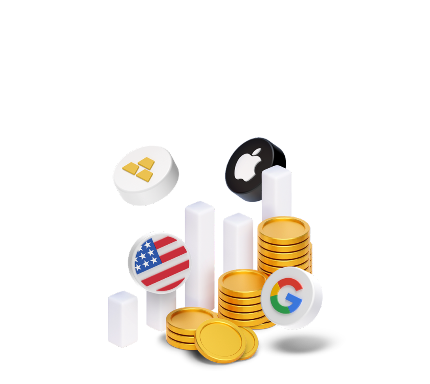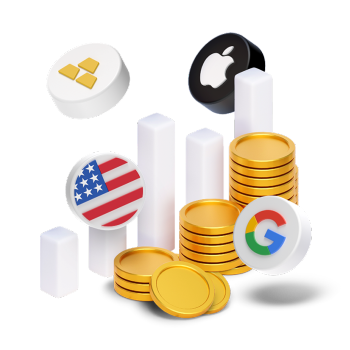What are Futures and How to Trade Them?

6 minutes for reading
Many traders start by trading currency pairs, trying later CFDs, stocks, and futures. Today I will be talking about the latter ones.
A futures is a contract between the seller and buyer by which they agree to sell/buy the asset in the future for a set price. Initially, such contracts were meant for companies, so that they could avoid unnecessary expenses.
Here is an example. We sell coffee yet we understand that due to the pandemic, the price for it will only be growing, and quite noticeably. To avoid a steep increase in the price and a decrease in sales, we agree with the supplier on a large supply of beans at the current price but in six months.
If the price for coffee indeed grows in the future, we will only win because we will buy the beans at a lower price. If the price does not grow and even fall, the one to profit from the trade is the seller because they will sell the coffee at a higher price than the current one.
Most often, base commodities for futures contracts are crude oil, wheat, corn, stock indices. Such contracts, as a rule, are trading in the exchange, and real supply of the commodity never happens.
Most often, futures operations are speculative: traders work with them to make a profit on the price difference. Normally, they close their positions before the contract expires and the supply date comes.
Why are futures interesting to traders?
On the whole, futures contracts are somewhat different from, say, stocks. When an individual trader buys stocks, it is more like an investment, while trading futures is more of a speculation.
Simultaneously, thanks to this peculiarity, futures have certain advantages, unavailable for investments in the stock market. For example, futures are traded almost 24 hours a day six days a week, while shares have a limited trading time.
Another advantage of futures is easier margin requirements when selling than those to stocks. A short position in stocks means selling the asset that has been loaned and then buying this one for less money. For stocks, this trading operation has high margin requirements, while with futures, they are the same for selling and buying.
Futures also allow diversifying certain classes of assets and invest in them more actively.
For example, the share price of an oil company will depend not only on oil prices but also on the work of the management and rivals. However, a futures itself can depend only on the oil price without any factors created by the work of the company and its rivals.
However, this does not mean that futures are less risky: keep in mind that it is still a composite financial instrument.
Margin requirements to trading futures are normally much lower than for trading shares, from 1 to 10% of the sum of the asset. Meanwhile, traders can use leverage that must be paid for.
On the one hand, this is an advantage, yet risks grow because the trader can open many trades with smallest guarantees. So, if the price goes in the necessary direction, the trader will win, nut if it reverses against the trader, they can start losing a lot. Hence, always be careful with leverage when trading futures.
What futures are there?
There are several types of futures contracts in different markets. A speculator should choose one or two assets and focus only on them to understand the market better and make correct decisions. Here are the most widespread futures:
- Precious metals. Traders buy and sell contracts for gold and silver. As a rule, this way they try to insure from growing inflation or the global financial instability.
- Stock indices. This contracts depend on the movements of stock indices, such as Nasdaq or Dow Jones. So, traders try to make money on those movements.
- Energy. These futures include oil and nature gas, giving hints on global oil price movements.
- Agriculture. These are futures for soy, corn, and wheat. They are heavily influenced by weather and seasons.
- Treasury bonds and interest rates. Such futures play the most important part in global financial markets, and those who trade them keep a close eye on the actions of the US Fed.
- Animal husbandry. In this category, traders speculate on prices for cattle and pork. Demand and supply have a strong influence upon this category.
How to trade futures, after all?
To work actively with futures, the trader needs to focus on a limited number of instruments to stay concentrated and accumulate experience. With futures, you can take long and short positions: the direction of the work depends on your tolerance to risk and your goals.
A long position means that you buy a contract and wait for the base asset to grow in the future. Then you sell it at a higher price and make money on it. Risks emerge from the base asset not growing or even falling – this way you lose your money.
A short position means that you sell your futures and wait for the price of the base asset to fall in the future. Here are also risks: if you are in a short position, and the price for the base asset grows, your losses can be unlimited because there are no limits to growth.
There is also such a notion as calendar spread. This is a strategy by which the trader takes both a long and short position in one asset with different delivery dates.
The potential profit emerges from the small difference between the sold and bought contract. If the calendar spread is positive, the trader buys a futures with a shorter delivery term and sells a futures with a longer one. If the calendar spread is negative, they sell the futures with a shorter delivery term and buy the futures with a longer one.
Bottom line
Futures is a contract between two market participants on selling or buying a financial asset in the future at a set price. Normally, trades on them are closed preliminary without a real supply.
Trading futures is considered more risky and speculative because it is complicated and has smaller margin requirements than those to stocks. Some say that futures are more for active short-term traders than long-term investors.
Because risks are higher, you should stick better to your risk-management rules and manage your assets wisely.











